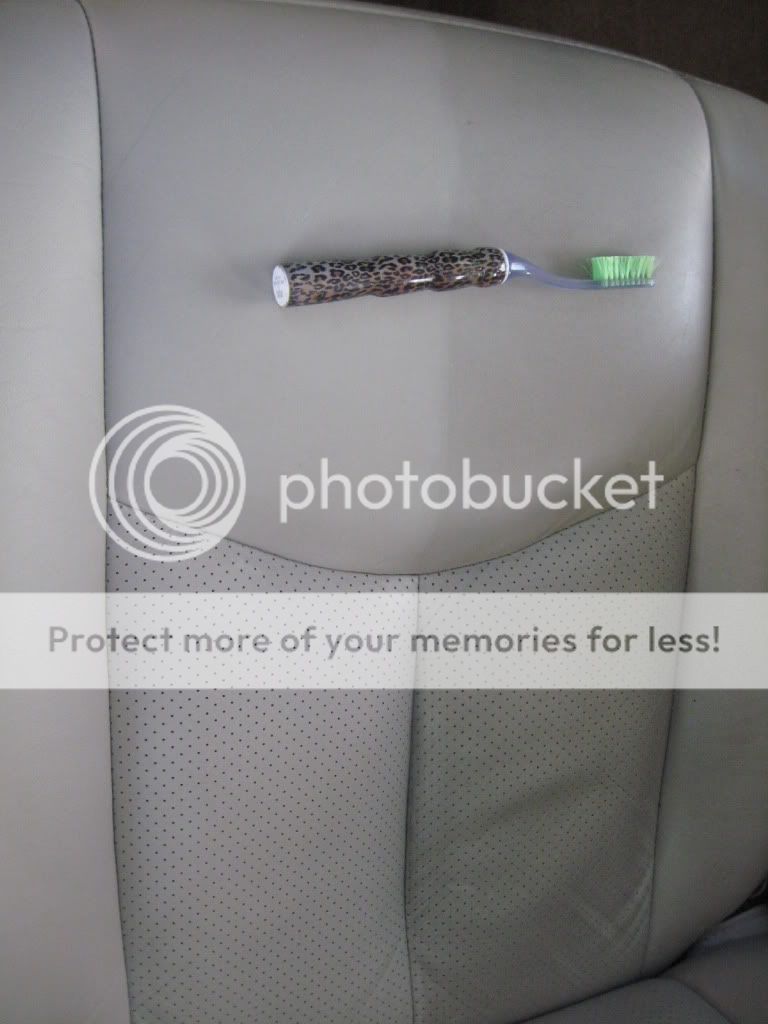Roger,
The red leather is still considered coated or finished leather? That's crazy how much of the color came off!

All smooth auto seat are finished leathers; including the Ford King Ranch aniline leather. The pigmented types are both colorcoated and topcoated; while else the more expensive aniline types are “stained or dyed” follows with topcoat. Pigment colors are opaque and aniline colors are transparent.
This red leather could be a micro-pigmented leather also known as semi-aniline. It could be confirm only if the reversed side is also red; if this is so, then this leather would have been first dyed through both sides as you see the video on “Fatliqour” by Discovery Channel – dyed first prior to fatliquoring it.
HowStuffWorks Videos "Dirty Jobs: Fat-liquor"
As the topcoat may have been removed obliviously; anyway it’s clear or transparent, so even if it’s been brushed off with stiff nylon brush or extracted with towels, one can hardly notice the damage. Until the colorcoat is left exposed; further usage of unsafe alkaline and or alcohol content solution will cause dyestuff to bleed through the micro-pigmented coating.
To test if the red transfer to the cloth is actually the transparent dyestuff; a pH 2.3 Stripper is used.
How to rectify the situation if it involves the dyestuff…remember we have seen the video on Isoelectric Point and its relevancy here…maybe let’s watch it one more time…
[ame=http://www.youtube.com/watch?v=Fkv89VW8g38]YouTube - The Isoelectric Point of Proteins - BV 5[/video]
Leather structure has an average pH of 3 to 5, any alkaline pH value above its isoelectric point will shift the protein leather fibers negative (-).
As the dyestuff is also negative (-), it breaks the hydrogen-bond and leach out as fugitive dyes.
To rectify this bleeding problem is to reverse the protein fibers back to positive (+); by acidifying it with a pH 2.0 acidifier. Since pH 2.0 is below the leather isoelectric point; it will again shift the protein fibers back to (+) to hydrogen-bond with the (-) dyestuff. When fibrils and the dyestuff are attracted to each other like magnet (unlike poles attract), the profuse bleeding stops.
When we rely on the general acceptable principle of science, even as the neurosurgeon practices, results can be very predictable.
This will bring reputation to our professionalism; for the well-to-do and the educated will stay as clients and are willing to pay a premium when we take time to educate them our service process, as poor leather educated customers will come and go to shop for the cheapest price.
Educated clients understand that expensive leather services is cheap in the long term.
Further repeat readings:
7] Leather Finish Types:
The finish of leather determine its finish types and the majority of leather seats are pigmented; which include the pigmented non-absorbent, micro-pigment semi-absorbent and the napa-pigmented absorbent; these are also referred to as the coated leathers. Aniline leathers found in Ford King Ranch is aniline dyed with a gloss topcoat. The reverse side of smooth leather is also used as suede trim in some models; so products safe for suede should also be safe for its smooth leather side and vice versa.
8] Pigment Color Coating:
Auto pigment is UV stronger than the typical indoor furnishing pigment type. The opaque color coating we see is a film ratio averaging 1 part pigment to 2 part binder in various formulations; with an average micron thickness of 0.02mm. This pigment color coating is essentially for the fashion aesthetic appeal.
Roger Koh
[email protected]











